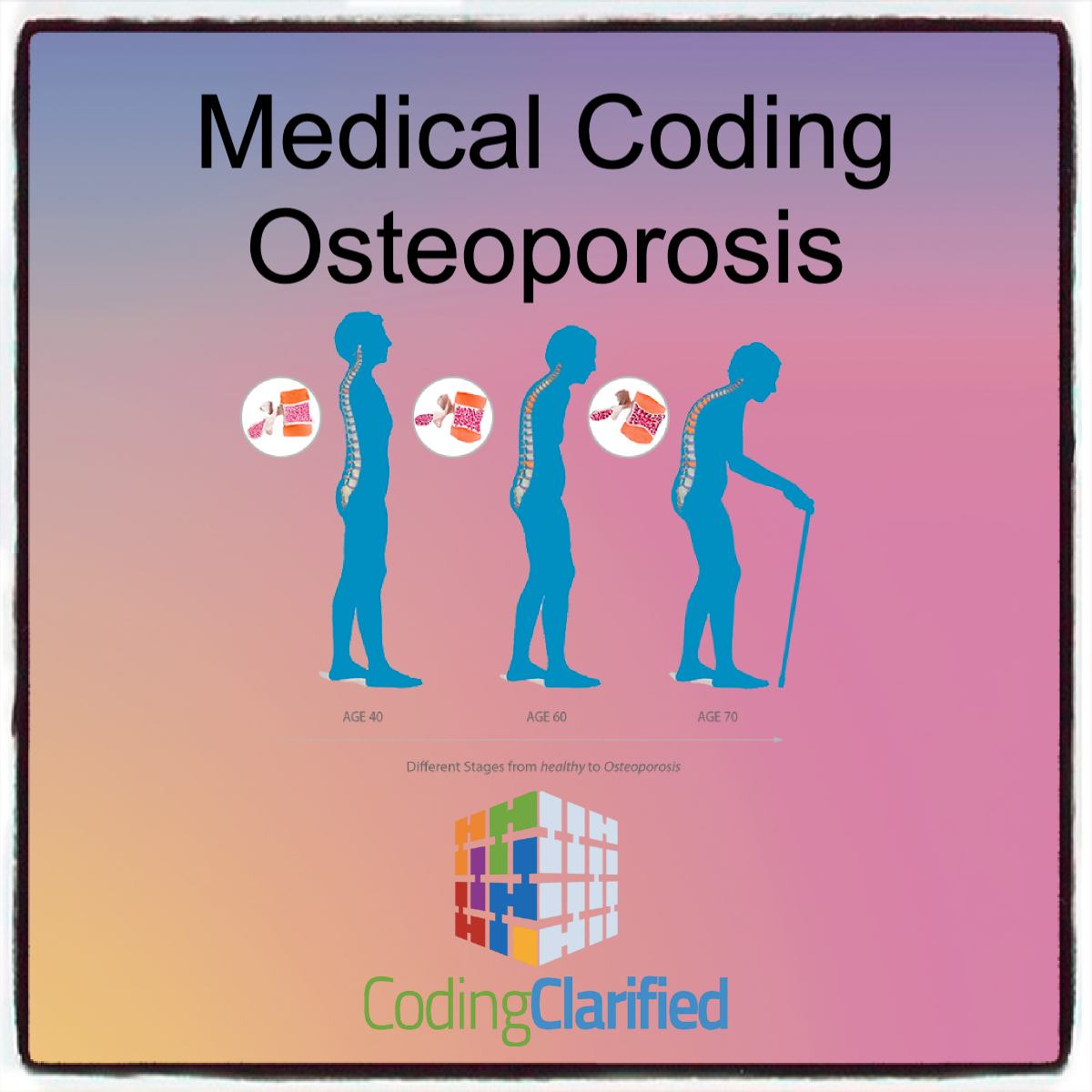Medical Coding & Billing for Osteoporosis: Guidelines and Tips
Osteoporosis is a common condition, especially among older adults, characterized by decreased bone density and increased fracture risk. Accurate diagnosis coding and proper billing for osteoporosis and its related complications are essential for ensuring patient care continuity, appropriate reimbursement, and audit protection. This blog highlights key ICD-10-CM codes, CPT codes, and documentation tips to optimize coding and billing for osteoporosis.
ICD-10-CM Diagnosis Coding for Osteoporosis
Osteoporosis coding in ICD-10-CM is classified based on:
Cause (age-related, drug-induced, idiopathic, postmenopausal, etc.)
Presence of current pathological fracture
Common ICD-10-CM Codes for Osteoporosis:
| Code | Description |
|---|---|
| M81.0 | Age-related osteoporosis without current pathological fracture |
| M81.8 | Other osteoporosis without current pathological fracture |
| M82.0–M82.8 | Osteoporosis in diseases classified elsewhere |
| M80.0–M80.88 | Osteoporosis with current pathological fracture (specify site) |
Tip: Always check for documentation of fractures. Use M80 codes only if there is a current pathologic fracture.
Example:
M80.051A – Age-related osteoporosis with current pathological fracture, right femur, initial encounter
CPT Codes for Osteoporosis-Related Services
Most osteoporosis-related services fall into evaluation, lab, imaging, and treatment categories.
Bone Density Testing (DEXA Scan):
| CPT Code | Description |
|---|---|
| 77080 | DXA scan, axial skeleton (hip, spine) |
| 77081 | DXA scan, appendicular skeleton (peripheral) |
| 77085 | DXA with vertebral fracture assessment |
| 77086 | Vertebral fracture assessment only |
Use ICD-10 code Z13.820 if the test is for screening purposes.
Office Visits:
99202–99215 – Evaluation and management codes (based on time/complexity)
Osteoporosis Treatment Injections (e.g., Prolia, Reclast):
| CPT Code | Description |
|---|---|
| J0897 | Injection, denosumab (Prolia), 1 mg |
| J3489 | Injection, zoledronic acid (Reclast), 1 mg |
| 96372 | Therapeutic, prophylactic, or diagnostic injection (subcutaneous or intramuscular) |
| 96365–96379 | Infusion administration (for IV bisphosphonates) |
Documentation Best Practices
Specify type of osteoporosis: Age-related, postmenopausal, drug-induced, etc.
Indicate presence of fracture: And specify if it’s current, old, or healed.
Fracture site and laterality: Ensure it matches ICD-10 laterality requirements.
Screening vs Diagnostic: Screening requires Z-codes; diagnostic requires M-codes.
Drug-induced osteoporosis: Must document both the drug effect and osteoporosis.
Billing Tips & Compliance
Preventive Services: Medicare covers a DEXA scan once every 2 years if criteria are met. Use modifier GY if billing for non-covered services.
Link ICD-10 codes carefully: Ensure the diagnosis supports the procedure/test billed.
Check frequency limits: Especially for imaging and high-cost injectable medications.
Use appropriate encounter designations: E.g., “A” for initial, “D” for subsequent, “S” for sequelae with fracture codes.
Common Coding Errors to Avoid
Using M81 when a fracture is present – M80 series should be used if a pathological fracture exists.
Failing to document the cause of osteoporosis – Especially needed for M82 and drug-induced cases.
Incorrect DEXA coding – Ensure you’re not underbilling by skipping vertebral assessment or using outdated codes.
Risk Adjustment & HCC Coding
Osteoporosis (especially with fracture) impacts HCC (Hierarchical Condition Category) risk scores. Documenting and coding correctly ensures accurate risk adjustment, especially in value-based care models.
M80 codes = HCC relevant
M81 codes (without fracture) = may not carry HCC weight unless coexisting conditions apply
Accurate osteoporosis coding requires attention to documentation details, especially fracture status, cause, and laterality. Following these coding and billing tips not only supports clinical care but also ensures compliance and optimal reimbursement.
AAPC Orthopedic Coding Alert https://www.aapc.com/codes/coding-newsletters/my-orthopedic-coding-alert/faqs-break-down-pathologic-fracture-coding-for-the-best-dx-169840-article

